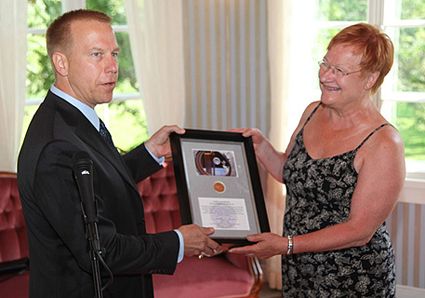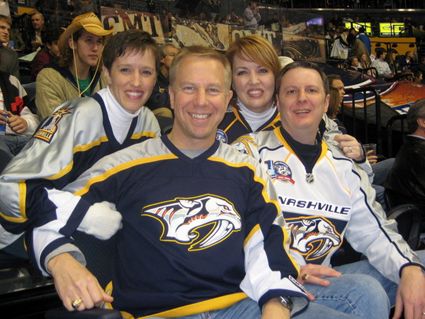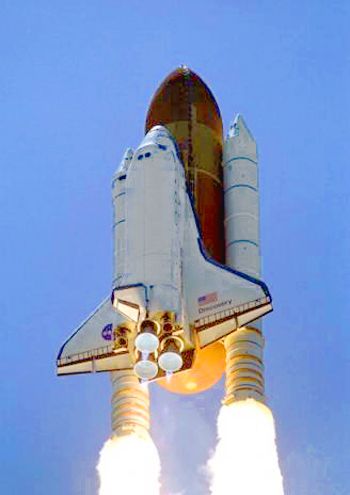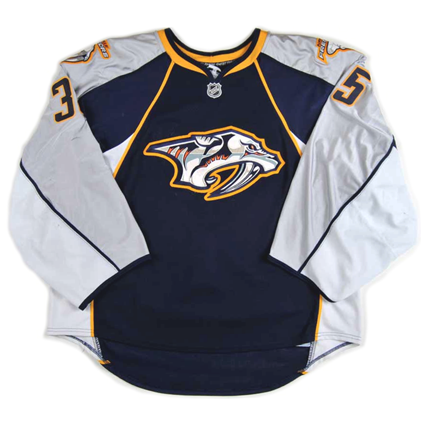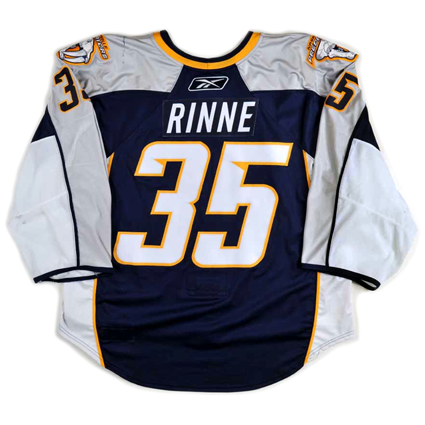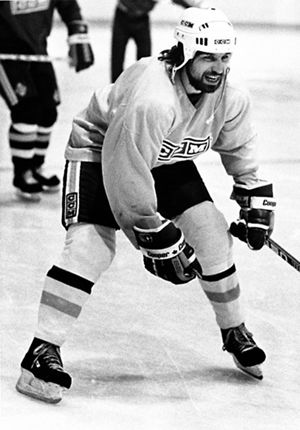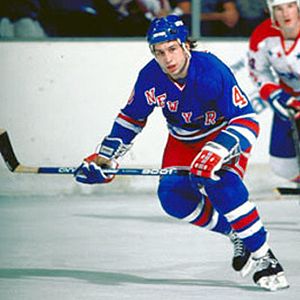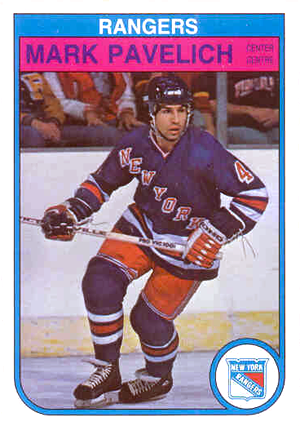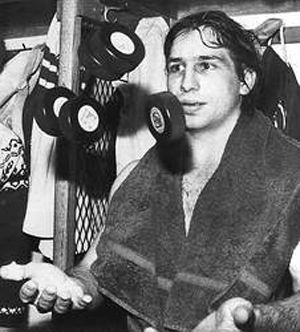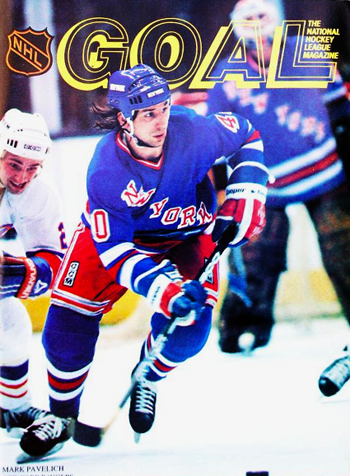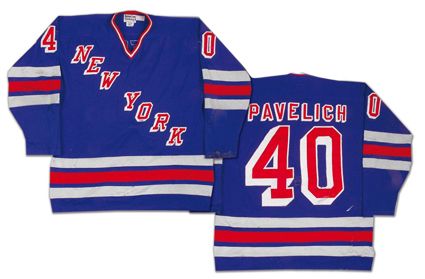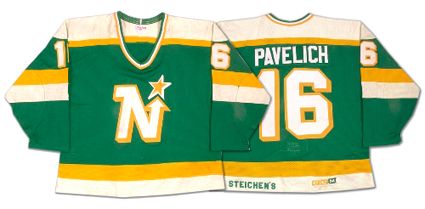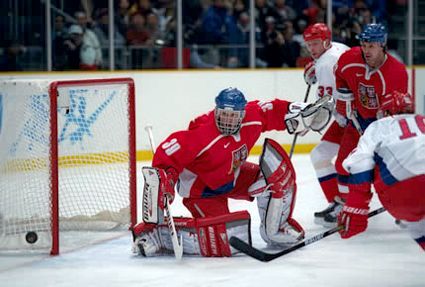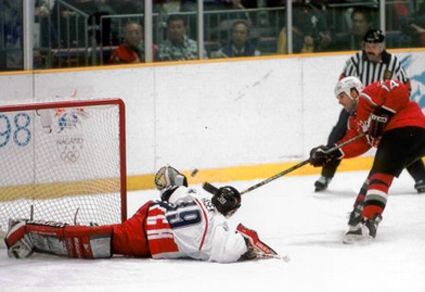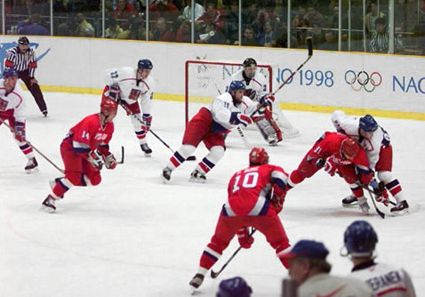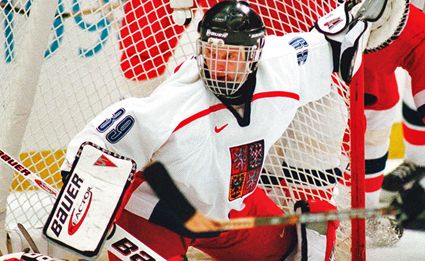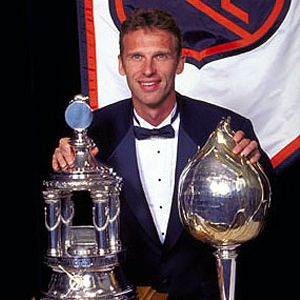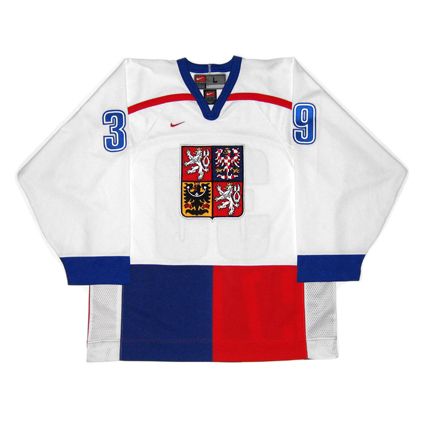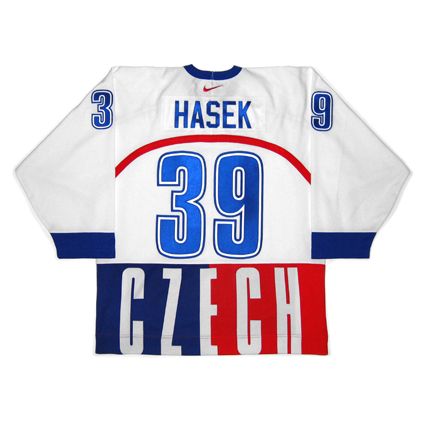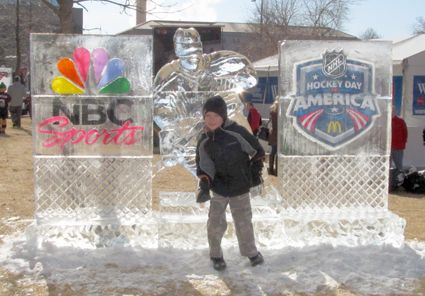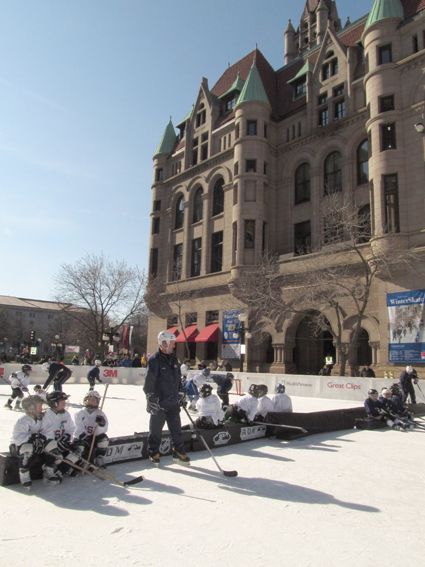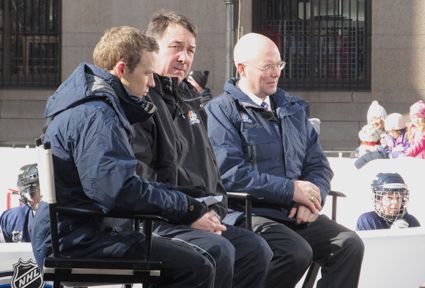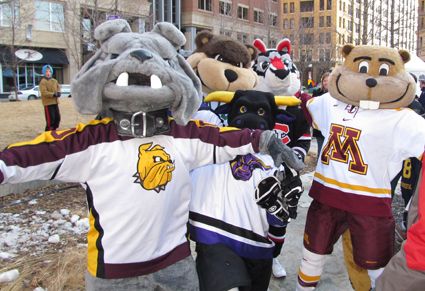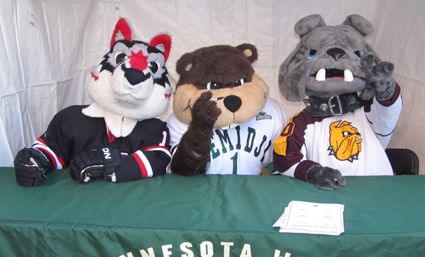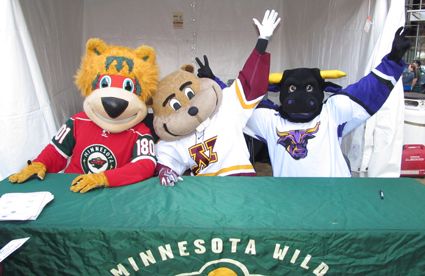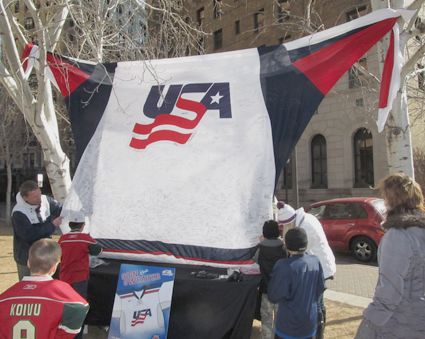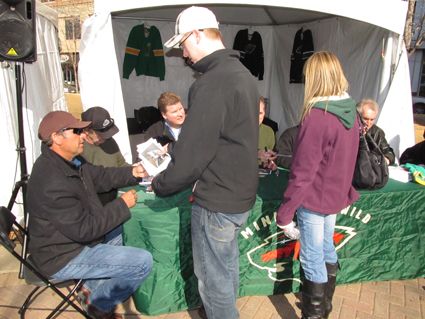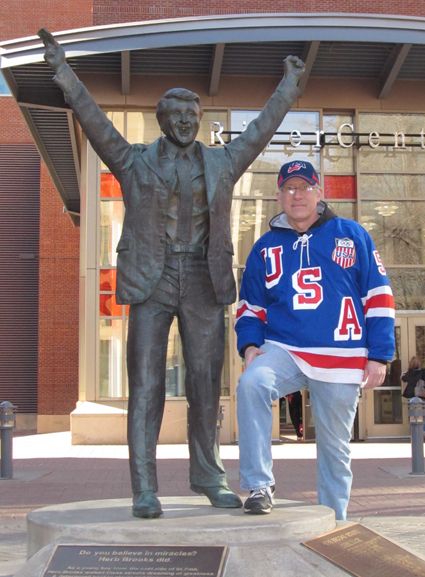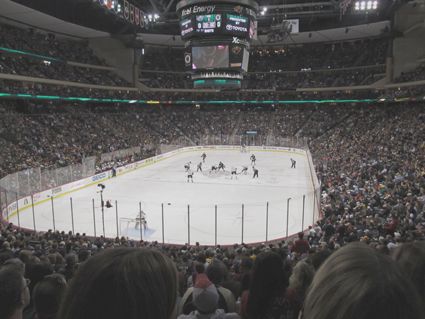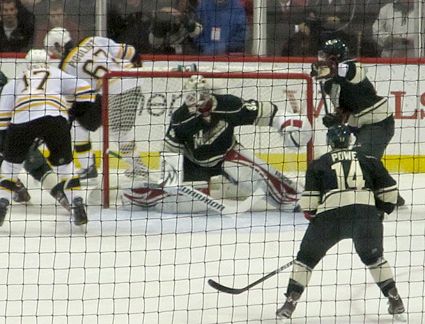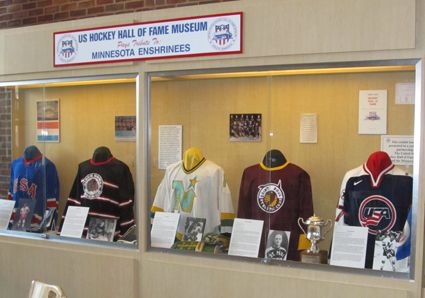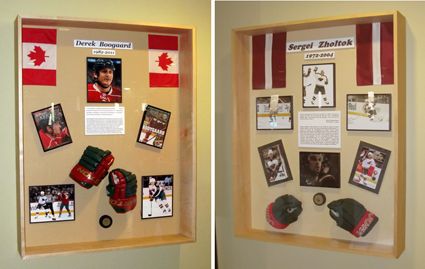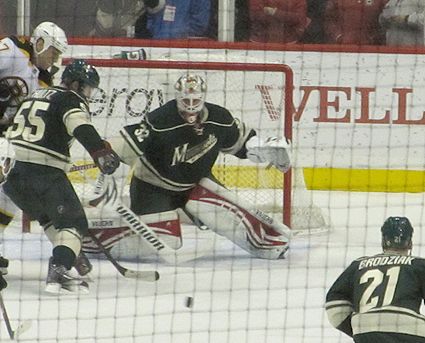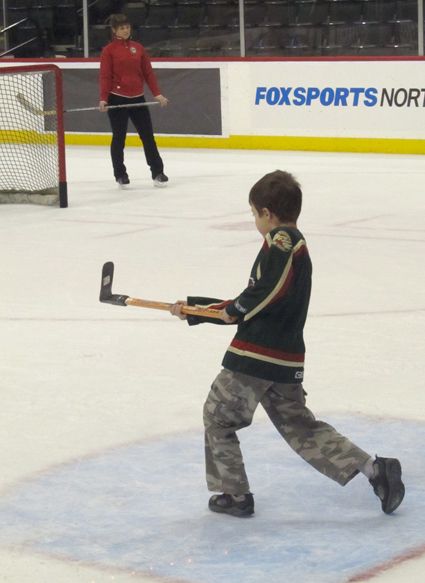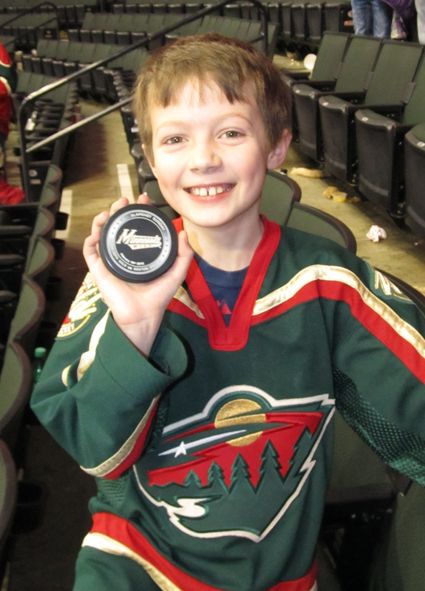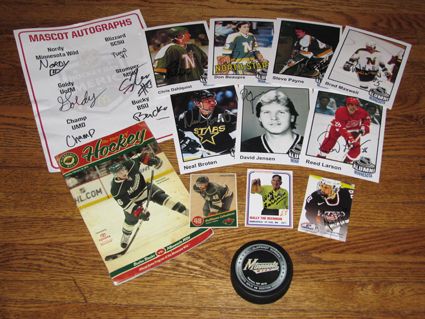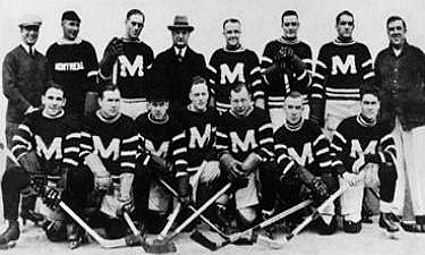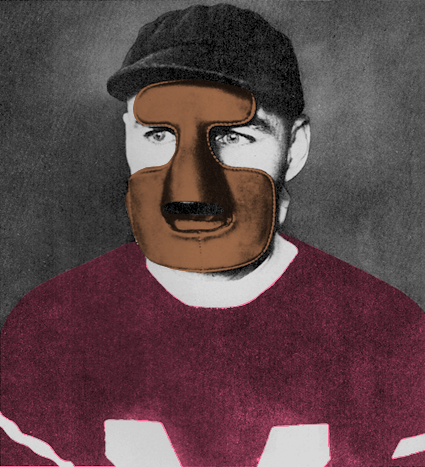Friday, February 24, 2012
2009-10 Nashville Predators Pekka Rinne Jersey
When Nashville Predators fan Tim Morrell found out his brother-in-law, Colonel Tim Kopra has been selected as one of the astronauts for flight STS-133 of the space shuttle Discovery, he had an idea.
Colonel Tim Kopra
While the main goal of the mission would be to deliver spare components and install a new module for the International Space Station, Morrell knew each crew member would be allowed to bring a limited amount of personal items into space, so he asked Kopra if he would be willing to bring a Pekka Rinne Nashville Predators jersey along for the ride.
It was to be Kopra's second trip into space, the first flight STS-127 coming in July of 2009 aboard Endeavour. During that flight, Kopra, who's grandfather immigrated to the United States from Finland, brought with a Kalevala Medal, which is awarded for Service to Finnish Culture. During that first flight, he spoke with the President of Finland Tarja Halonen via a video teleconference and then later travelled to Finland, where he presented her with the actual medal which he had taken into space.
Timothy Kopra with Finnish President Halonen
Morell's idea to ask Kopra to bring a jersey of a Finnish goaltender from his favorite team came from another crew member aboard Morell's original flight, Canadian Julie Payette, who appropriately brought with a Maurice "Rocket" Richard jersey for her trip into space.
Canadian astronaut Julie Payette poses with the Rocket Richard jersey she took into space
Morell and his wife Beth brought Kopra and his wife to their first ever game in December of 2007, a 4-3 Nashville win over the Columbus Blue Jackets, making sure all four were appropriately dressed in Predators jerseys.
The Kopras and Morrells enjoying the Predators game
With Kopra having been given so much media coverage in Finland for his Finnish ancestry, choice of the Kalevala Medal to take with on his flight and subsequent meeting with President Halonen, Rinne was already familiar with Colonel Kopra, and was honored to learn that he intended to take one of his jerseys with him on his second flight.
"It's a big deal even in Finland," Rinne said. "He has been on the news several times. That's something that the Finnish people know well. I was really surprised when I heard about it. It's awesome. Obviously I'm proud of that. It is such and exciting thing."
Pekka Rinne
Kopra was scheduled for two space walks during his flight, which will be his last prior to retiring as an astronaut as well as the Army. The flight will also be the next-to-last mission for the space shuttle program in it's 30 year history.
Unfortunatley, with training for the mission having begun in October of 2009, 16 months prior to the scheduled flight, Kopra was injured in a biking accident on January 19, 2011 badly enough, said to be a possible broken hip, that he had to be replaced on the crew by astronaut Stephen Bowen with the scheduled launch less than five weeks away.
STS-133 was originally scheduled to launch on November 1, 2010, but mechanical delays pushed back the date several times, and it was during those delays that Kopra suffered his accident, putting the plan for the Predators jersey in space in serious jeopardy, as it was unknown at the time if Kopra's personal items would remain onboard for the flight.
After all the complex issues which delayed the mission had been sorted and solved, STS-133 was launched into orbit on this date in 2011.
The space shuttle Discovery
It docked with the International Space Station and successfully delivered it's payload to the space station, eventually returning to Earth on March 9, 2011 after 14 days.
On the day of the launch a NASA spokesperson reported that the Predators jersey was not listed on the official flight manifest, but left open a slight possibility that it did make in on board, but following the flight Kopra's wife relayed to her sister Beth Morrell that the #35 Rinne jersey was among the items removed from Discovery following it's return.
Today's featured jersey is a 2009-10 Nashville Predators Pekka Rinne jersey. After playing for Oulun Kärpät in Finland and being drafted 258th overall with the final pick of the eighth round of the 2004 NHL Entry Draft, the 6' 5" Finn came to North America for the 2005-06 season to play with the Milwaukee Admirals of the AHL, eventually leading the club to the Calder Cup Finals. That same season he played a pair of games with the Predators of the NHL, earning his first victory in the process.
After two more seasons with the Admirals, Rinne became the Predators #1 goaltender beginning with the 2008-09 season, raising his win totals from 29 to 32 and then 33 in 2010-11, 9 of those by shutout. He also participated in the NHL All-Star Game in 2009.
The Predators were founded in 1998 and wore a jersey of a unique design which remained unchanged through the 2006-07 season, save for a change in shoulder logos in 2005-06.
Today's featured jersey made it's debut in 2007-08 with the league wide introduction of the new Reebok Edge jerseys. For the introduction of the Edge jerseys, Reebok created a limited number of templates, which resulted in Nashville's design sharing a similar appearance to the Colorado Avalanche, Edmonton Oilers, Florida Panthers and to a lesser degree, the Atlanta Thrashers.
In addition to the yellow piping, derisively called "the apron strings", the most maddening design element of this style jersey was, while the top half of the arms was a consistent sliver/grey in color, the underside of the sleeves was navy blue for the upper half, before unexplainably changing to white half way down for no reason whatsoever! Why the underside of the arms had to change color on the team's home dark jerseys at the midpoint, we will never fathom, especially in light of the teams road white jerseys carrying the same color from the neck to the wrist like a proper design should.
Rinne in a blue Predators jersey, showing how the underside of the sleeve change color in midstream
Today's video section begins with the launch of STS-133, the final flight of Discovery.
Next up is a collection of Pekka Rinne highlights, showing the Finnish net minder at his sprawling, diving, denying best, set to a great soundtrack.
Finally, Colonel Kopra answering questions (in English) during his trip to Finland after his flight on STS-127.
Labels:
Nashville Predators,
Rinne Pekka
Thursday, February 23, 2012
1982-83 New York Rangers Mark Pavelich Jersey
Hailing from the Iron Range in northern Minnesota, Mark Pavelich attended the University of Minnesota Duluth beginning in 1977-78. His progress was pronounced as he scored 12 goals and 19 points his first season, 14 goals and 44 points his second (third on the club) and leapt up to 31 goals and 79 points to lead the team in 1978-79.
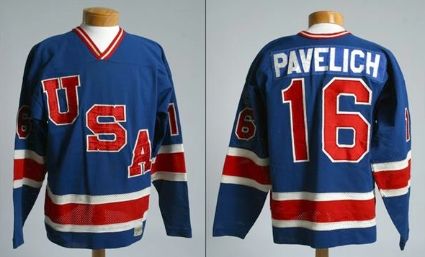
Pavelich while with Minnesota Duluth
His creative "rink rat" style of play caught the eye of head coach Herb Brooks who who named Pavelich to the 1980 United States Olympic Team, where he teamed with UMD Bulldogs teammate John Harrington and fellow northern Minnesota native Buzz Schneider in a line that became known as the "Coneheads".
"It was kind of unique, obviously, growing up playing hockey in Eveleth," Pavelich recalled. "I was fortunate enough to have the rink just a couple of blocks say, It was just nonstop hockey. I was always down at the rink."
During the 53 games leading up to the Olympics, Pavelich scored 45 points and during the seven games of the Olympic tournament, he averaged a point per game, with one goal and six assists, including his assist on the opening United States goal scored by Schneider and the critical first assist, earned by sending the puck into the slot despite facing and moving the opposite direction while falling backwards, where it was gathered by Mike Eruzione, who then scored the game winning goal in the "Miracle on Ice" upset over the Soviet Union, later named the top story in the IIHF's first 100 years.
Undrafted by any NHL club, certainly in part due to his 5' 8" size, Pavelich took his game to HC Lugano in Switzerland, where he racked up 73 points in 60 games before once again putting on the red, white and blue of the United States at the 1981 World Championships.
Meanwhile, back in the United States the pairing of his Olympic coach Brooks and his assistant Craig Patrick, was reunited when Patrick hired Brooks to be the head coach of the New York Rangers. They brought Pavelich back to the United States and reunited him with not only Brooks, but also former US teammate Dave Silk and later Rob McClanahan.
Pavelich took to the NHL right off the bat, finishing third in team scoring with 33 goals and tying for second in points with Ron Dugay at 76. The following season Pavelich rose to second in team scoring with a nearly identical 75 points while raising his goal total to a team leading 37, which included a record setting game against the Hartford Whalers on this date in 1983.
In that game, Pavelich opened the scoring with a power play goal just 1:17 into the contest. Vaclav Nedomansky banked another power play goal for the Rangers less than a minute later at 2:15. After the teams traded goals two minutes apart later in the period, the Rangers began to pull away with goals by Swede Kent-Erik Andersson at 18:36 and Pavelich's second goal, again on the power play with just ten seconds remaining in the period to give New York a commanding 5-1 lead after the first period.
Barry Beck stunned the Whalers just nine seconds into the second period before Pavelich completed his second career hat trick at the 9:06 mark. Mike Rogers made it 8-1 Rangers two minutes later. Pavelich's former 1980 teammate Mark Johnson stemmed the tide with a goal for the Whalers at 12:52 before Ed Johnstone's goal for the Rangers and Michel Galarneau's for Hartford made it 9-3 for home team after two.
But there was still more yet to come, and in surprising, record setting fashion, for at 8:40 of the third period Pavelich scored his fourth goal of the night, from Tom Laidlaw and McClanahan, followed by his fifth goal of the game from Laidlaw just 11 seconds later, making Pavelich the first American-born player in the 66 year history of the NHL to score five goals in a game. His feat also equaled the Rangers team record set by Don Murdoch in 1976-77.
"As a pro, this is my most memorable game," he said afterwards.
Pavelich shows his five goal pucks to the media
following his record setting performance
In 9 playoff games that season, "Pav" set a career best with 4 goals and 9 points in 9 games.
While his goal total dropped from 37 to 29 the following season, he set a career high with 82 points thanks to his 53 assists in 1983-84.
1984-85 was a season of change, as Brooks was fired as the Rangers coach after 45 games and Pavelich himself was limited to just 48 games himself, although he still maintained a nearly a point per game average with 45.
With Brooks gone, Pavelich's days in New York were numbered, as he was uncomfortable and unaccustomed to playing the traditional NHL "dump and chase" style of new Rangers coach Ted Sator and retired at the end of the season after playing 59 games, scoring 20 goals and 40 points.
He was happy to return home to the simple life of hunting and fishing, only to be called on by Brooks once more, who had now taken over as the head coach of the Minnesota North Stars. It was a short-lived reunion however, as Pavelich would only play a dozen games for the North Stars in 1986-87, although they were productive ones, with 4 goals and 10 points. The record shows that later that season he suited up for the Dundee Rockets in the British Hockey League for a single game, being credited with a pair of assists.
While now done with the NHL, he was not quite finished with hockey just yet, finding a home with HC Bolzano in Italy beginning with the 1987-88 season, where he teamed with former North Stars teammate, Swede Kent Nilsson. There, Pavelich scored nearly a goal per game, with 31 goals in 36 games on his way to 73 points, more than two points per game. That was not all, as Bolzano went on to win the league championship that season, which included Pavelich's 9 goals and 20 points in just 8 playoff games.
He returned to Bolzano for another season in 1988-89, adding 23 goals and 57 points in 44 games before he retired once again.
But not for good.
With the league expanding in 1991, Pavelich was lured out of Minnesota one final time by the expansion San Jose Sharks, where he recorded an assist on the Sharks first ever goal on October 4, 1991. His return was very brief however, as he would only play two games before retiring, this time for good.
His final NHL totals were 355 games played, 137 goals and 192 assists for 329 points , with another 7 goals and 24 points in 23 playoff games.
Pavelich remains to this day a unique individual, who shuns the spot light of fame accorded to the 1980 Olympic Team, rarely leaving the comfort of home in the woods of Minnesota for reunions, interviews or personal appearances, unlike the always available Eruzione, who is often kidded that he has made a career out of one goal and has never met a microphone he didn't like. "The past is the past," Pavelich has been quoted as saying.
It would take 22 years before Pavelich joined his 19 teammates for a reunion, this coming at the the 2002 NHL All-Star Weekend. "It was just that time," Pavelich said when asked why he had chosen that weekend to rejoin his teammates.
His wife Kara said of his reputation, "I know Mark is often said to be reclusive, but that's overdone. He has a very large circle of friends." when Mark was inducted into the Duluth Entertainment and Convention Center Athletic Hall of Fame (the former home of the UMD Bulldogs) in 2006.
Today's featured jersey is a 1982-83 New York Rangers Mark Pavelich jersey from the season during which he became the first American-born player in NHL history to score five goals in one game.
The Rangers had worn a variation of their traditional blue sweaters with "Rangers" diagonally since their inception in 1926 almost without exception until a change to a new modern style in 1976-77, which lasted only one more season until they went back to their traditional look in 1978-79, only with one major difference, as "New York" had now replaced "Rangers" across the front of their classic blue jerseys for the first time ever.
This style would last for Pavelich's entire stay in New York, lasting through the 1986-87 season until a return to "Rangers", which remains through today.
photo courtesy of Classic Auctions
Bonus jersey: Today's bonus jersey is a 1980 United States Mark Pavelich jersey. This style, with "USA" diagonally across the front was worn during the 1980 Olympic Team's pre-Olympic schedule of games played against an assortment of minor league, college and other national teams in preparation for their participation in the Olympics, where they wore a new set of jerseys with the "USA" cresting now arched across the front.
This jersey was auctioned off by Lelands.com in December of 2004 and sold for $4,969.87.

Extra Bonus Jersey: Today's extra bonus jersey is a 1986-87 Minnesota North Stars Mark Pavelich jersey as worn during his brief stay with his home state North Stars, where he was reunited with coach Brooks for the third time in his career.
photo courtesy of Classic Auctions
Today's video is Pavelich setting up Eruzione's game winning goal in the Miracle on Ice.
Labels:
New York Rangers,
Pavelich Mark
Wednesday, February 22, 2012
1998 Czech Republic Dominik Hasek Jersey
The Olympic hockey tournament changed like never before in 1998 when the professional players of the National Hockey League were allowed to compete in the Olympic hockey tournament for the first time ever. Prior to the 1998 Winter Olympics in Nagano, Japan, paid professional players were allowed to participate, but with the Olympic games taking place in February, the highest caliber players were far too busy with their ongoing NHL seasons to even dream of taking part in any of the previous Olympics.
Our first video today is the shootout between Canada and the Czech Republic in the semifinals, highlighting the sprawling, twisting, unorthodox style used by Hasek to full effect.
Starting in 1920, the Olympic gold medal was essentially the property of Canada, winning 6 out of 7 possible gold medals through 1952. With the arrival of the Soviet Union on the scene in 1956, the balance of power was radically changed. Through 1992, when the Soviet trained players skated together one final time as the Unified Team, the Soviets won 8 to of 10 golds, with only the Americans winning twice on home soil preventing a clean sweep over the course of 4 decades. Sweden took the gold in 1994 over Canada, but the form charts needed to be thrown away with the sudden availability of the stars of the NHL, who were now going to be on hand for the first time since their formative years, if not the first time ever for some. With the NHL season on hold, interest in the tournament was tremendous.
The tournament began with Kazakhstan winning Group A and Belarus taking Group B, with the two former Soviet states advancing to the First Round at the expense of Slovakia, Italy, Austria, Germany, France and Japan, whose tournaments were now over after just three games.
The tournament format now called for two groups of four teams to play each of the three teams in their group once each to determine their seeings when they all would advance to face an opponent from the opposite group in the single elimination Final Round playoffs.
Kazakhstan was placed in Group D along with the Czech Republic, Finland and Russia, who were all placed into the First Round directly based on their IIHF world ranking prior to the tournament, the same as Canada, Sweden and the United States in Group C, who were joined by Belarus.
In Group C, Canada finished first with a perfect 3-0 record to give them hope of returning to the top place on the medal stand for the first time since 1952 now that the controversy between their best amateurs versus the Soviet "amateurs" had now been finally removed, leveling the playing field on the Olympic stage for the first time in decades.
Canada's opponent as the first seed in Group C was the fourth place finisher in Group D, Kazakhstan. Sweden finished second thanks to a 4-2 win over the Americans, which paired them with Finland in the quarterfinals.
Group D winning Russia drew overmatched Belarus from Group C, while the Czech Republic's second place in Group D saw it paired with the United States.
Group winners Canada and Russia held serve with a pair of easy 4-1 wins over Kazakhstan and Belarus, as expected, while the under achieving United States ran afoul of the Czech Republic, also by a 4-1 score in favor of the higher seeded club. The only upset in terms of seeding came with Finland's exciting 2-1 defeat of Nordic rivals Sweden in a tense game that was scoreless after two periods.
The parings for the semifinals saw Canada drawing the Czech Republic. The Canadians were armed with some of the finest firepower in all of the world, including forwards Wayne Gretzky, Theo Fleury, Paul Kariya, Eric Lindros, Joe Nieuwendyk, Joe Sakic, Brendan Shanahan and Steve Yzerman, boasted a defensive hall of fame with Rob Blake, Ray Bourque, Al MacInnis, Chris Pronger and Scott Stevens, with the legendary Patrick Roy in goal. Amazingly, the Canadian team General Manager Bobby Clarke chose Rob Zamuner over Mark Messier, who was not even on the Canadian roster, and Lindros as captain rather than Gretzky, Bourque or Yzerman!
Going into their game against Canada, the Czechs had won three and lost one, but goaltender Dominik Hasek was in top form, having surrendered only 5 goals in 4 games, with their only loss being a 2-1 decision to Russia in the First Round.
The Czech Republic losing to Russia 2-1 in Group D play
The first two periods passed without a goal by either side, as Roy and Hasek traded saves. Finally halfway through the third period, Jiri Slegr beat Roy with an assist from the veteran Pavel Patera. The Canadians pressed hard for the equalizer, but the Czech defensive system stood tall and Hasek took care of the rest as time would down. Finally with just 1:03 remaining in the game, Trevor Linden solved Hasek with an assist from Lindros.
Following a scoreless overtime, the game went to a shootout to determine who would advance to the gold medal final. Fleury, Bourque, Nieuwendyk, Lindros and Shanahan were all stopped by the on-form Hasek, while Robert Reichel's opening goal in off the pipe proved to be enough to win the game for the Czechs.
Hasek stops Shanahan to seal the victory for the Czech Republic
Russia advanced to face their long-time rivals with a dominant 7-4 win over Finland to set up a rematch of their earlier game in the First Round, won by the Russians 2-1.
The championship final, held on this date in 1998, was a predictably low scoring affair, as each team looked to exploit any mistakes by their opponent, while both teams kept their game simple and looked to avoid any unnecessary mistakes. Just like in their first meeting, the opening period passed with no scoring and moved onto the second.
Action from the second meeting between Russia and
the Czech Republic, only this time for the gold medal
Again, Hasek in goal for the Czechs and Mikhail Stalenkov stood tall in goal for the Russians as both teams failed to solve the other. As the game approached the midway point of the third period, a faceoff took place in the Russian zone to the right of Stalenkov. Martin Prochazka won the draw back to his winger Patera, who simply slid the puck back to Petr Svoboda on the point, who teed up the puck and fired it on goal, It passed through the tangle of traffic still hooked up following the faceoff and flew past Stalenkov and into the net for a 1-0 Czech Republic lead with still 11:52 remaining.
Hasek holding off the Russian attack
The goal was enough for Hasek however, as he and his teammates finished off the shutout to capture the first gold medal of the full participation Olympic hockey tournament, making Hasek a household name around the world and Svoboda an instant and unlikely hero in his home country, as in 1,028 NHL games, the defensive defenseman only scored 58 goals, less than 3 1/2 per season, with a career high of 8.
A delighted Hasek shows off his gold medal
Today's featured jersey is a 1998 Czech Republic Domink Hasek jersey as worn during the gold medal final during which he shutout the Russians, who boasted a roster of offensive stars the likes of Pavel Bure, Sergei Fedorov, Sergei Gonchar, Valeri Kamensky, Alexei Morozov, Alexi Yashin and Alexei Zhamnov.
Hasek would finish the Olympic tournament with six games played, five wins and just 6 goals allowed on his way to the gold medal as well as being named the Best Goaltender of the tournament.
While he was in the middle of a stellar NHL career, with Vezina Trophies having already been won in 1994, 1995 and 1997, his performance at the Olympics raised his awareness level well beyond that of the average hockey fan. He would continue his run of form for several more seasons, winning the Vezina again at the conclusion of the 1997-98 NHL season, along with his second consecutive Hart Trophy as league MVP, and again in 1999 and 2001, with Stanley Cup victories following in 2002 and 2007.
Hasek poses with his Vezina and Hart trophies in 1998,
just months after winning Olympic gold
This style of jersey was first introduced for the 1998 Olympics by Nike, who produced new uniforms for each of the participating teams in that year's Olympics, rather than the modern approach of creating one basic design template and simply recoloring it for each country. The Czech Republic jerseys, while somewhat similar to Canada and Belarus, with it's arched striping from the collar to the armpits, employed a unique font for the numbers as well as the bold color blocks inspired by the flag of the Czech Republic to set it apart from the other, but left no doubt as to who it belonged to with the ultra bold CZECH emblazoned across the lower back!
This next video contains extended highlights from the goal medal final, won by Hasek and the Czech Repbulic 1-0 over Russia.
Labels:
Czech Republic,
Hasek Dominik
Tuesday, February 21, 2012
Hockey Day in America Report
Sunday was Hockey Day in America on NBC, a part of USA Hockey's Hockey Weekend in America.
The NBC coverage of the event was based out of St. Paul, Minnesota, with the pre-game show broadcast from the Wells Fargo WinterSkate, an annual outdoor skating rink set up on the street in front of the picturesque Landmark Center, just a couple of blocks from the Xcel Energy Center, home of the Minnesota Wild, who were hosting the defending Stanley Cup champion Boston Bruins in NBC's national game following their earlier regional games.
We began our day by arriving at the WinterSkate at 11 AM in time to see Liam McHugh, Eddie Olczyk, Mike Milbury and Pierre McGuire do the NBC pre-game show from a stage overlooking the rink, where youth hockey players were demonstrating USA Hockey's American Development Model of practice drills. We were lucky enough to get the opportunity to briefly chat with Milbury and really enjoyed hearing some of McGuire's anecdotes from covering the 2005 World Juniors in Grand Forks, North Dakota where temperatures of -40º made life difficult for the TV crews.
Shortly thereafter, the mascots arrived from the five Division 1 college hockey programs in the state of Minnesota, Bemidji State, Minnesota, Minnesota-Duluth, Minnesota State and St. Cloud State as well as Nordy from the Wild. After creating a mix of atmosphere and havoc in the background of the NBC broadcast and entertaining the children in attendance while suffering all manner of abuse by kids who would just as soon punch them as high-five them.
The mascots then retreated to the safety of a pair of tents for their autograph session.
Following the mascot autograph session, we made out way over to the giant USA hockey jersey where we met USA National Team member (and Minnesota Gopher) Amanda Kessel, sister of the Toronto Maple Leafs Phil Kessel. There, we were able to get an autographed card from Amanda and and took the opportunity to sign the giant jersey, as it will be taken to Burlington, Vermont, where it will hang in the arena during the 2012 Women's World Hockey Championships in April.
Walking around some more, we ran into readers Richard and Jayson, who recognized our jersey and from our post on Saturday, and were each given one of our Third String Goalie hockey cards for spotting us in our 1960 USA jersey! The pair were certainly hard to miss, with Richard in his Dallas Stars "Mooterus" alternate jersey and Jayson in his Mighty Ducks jersey as worn in the feature film which inspired the name of the NHL club.
We also struck up a conversation with Kris, who had the most unique Wild jersey we spotted all day, adorned with the franchise history of patches as well as the excellent choice of Sergei Zholtok's name and number on the back.
While the early NHL game of the day was shown on a large screen TV set up at the WinterSkate, the next autograph session began, which featured Minnesota North Stars alumni Reed Larson, Don Beaupre, Steve Payne, Chris Dahlquist, David Jensen, Brad Maxwell and Neal Broten, the first American player to ever score 100 points in the NHL.
While the North Stars alumni were scheduled to play a game against the local Media All-Stars, we had promised our mite hockey player that we would be inside the Xcel Energy Center in time for the pre-game warmup for the Wild vs. Bruins game, scheduled for the same time, but before going into the arena, we stopped to have our picture taken with the Herb Brooks statue.
The game itself offered little hope to even the most die-hard Wild fan, as the Wild have had the league's worst record since mid-December and had lost seven straight heading into the contest with the defending champion Bruins and were playing without their captain Mikko Koivu. Still, a standing room only crowd of over 19,000 fans filled the arena for the nationally televised game.
Low and behold, the Wild held the Bruins off the board to finish the first period scoreless after being outshot 14-12, turning away a pair of Bruins breakaway chances.
Between periods, we went for a walk and took in some of the sights around the arena, the most notable displays being a tribute to the Minnesotan's inducted into the United States Hockey Hall of Fame in Eveleth, Minnesota, (from right to left) Henry Boucha, Mike Karakas, Lou Nanne, Tony Conroy and Neal Broten.
We also took a moment to stop by the new Derek Boogaard tribute next to the Zholtok tribute for the late Latvian and former Wild captain.
The second period was one of remarkable occurrences, as first Dany Heatley made a slick pass to recent call-up and Minnesota naive Chad Rau, who had taken off for the Bruins end following the change in possession. Rau's body language telegraphed a pass to Marco Scandella all the way, which got Bruins all-star goaltender Tim Thomas to cheat to the left which allowed Rau to fire an unexpected shot past Zedeno Chara and Thomas and into the net for a 1-0 Wild lead, making Rau the first player outside of Heatley, Koivu or Devin Setoguchi to score for the goal-starved Wild since February 4th, over two weeks time.
Wonders never ceased when another Minnesota native, Matt Cullen scored his first goal in 16 games, his first point of any kind in 9 and his first power play goal in over three months, which he called a "big relief".
Boston threw everything they had at the Wild in the third period, outshooting the home club by a vast 22-3 margin, but Niklas Backstrom held firm in the Wild goal to record a career high 48 saves, the most ever by a Wild goaltender in a shutout to earn the game's #1 star award.
Rau's first goal of the game was thus he game winner, his second game winner out of the two goals he has scored all season, with his first coming on Hockey Day in Minnesota, and his second now on Hockey Day in America!
Rau was not even expected to be in the Wild lineup, and was only recalled from the AHL's Houston Aeros the night before as a precaution in case Warren Peters was suspended for his crosscheck to the head of the St. Louis Blues David Backes the day before.
Rau's journey began in Abbotsford, British Columbia on Saturday when he received a text from the Aeros General Manager. At that point Rau began to do his best impression of the Dawson City Nuggets, when he first took a cab from Abbotford nearly two hours to the Vancouver airport for a flight to Los Angeles, where he missed his 9:45 PM connection to Minneapolis. He was able to take the red-eye flight, arriving at 6:45 AM, in time to have breakfast and take a nap before heading to the arena with his place in the lineup confirmed with the announcement of Peters one game suspension.
Following the conclusion of the game, our mite noticed the arena staff bringing more nets out onto the ice, not taking the two game nets away, which signaled the traditional Sunday afternoon post-game chance for kids to go out onto the ice and shoot a puck at one of the three nets.
After each child had taken their turn on the ice, they received a very nice souvenir puck, complete with the date of the game and the opponent printed on it - a nice memento courtesy of the Wild a first class organization in every respect.
Here is the collection of items we came home with: the mascot autograph sheet, seven signed North Stars alumni cards, our game program, a Guillaume Latendresse trading card given away at the gate, signed cards from Minnesota's favorite vendor Wally the Beerman and Amanda Kessel and the souvenir puck - total cost - $3 for the program with the proceeds going to a local youth hockey program.
It was a really fun day being at the center of Hockey Day in America, meeting some nice people, getting some autographs and having the home team pull off a rather unexpected shutout win, all while sharing the day with our own little hockey player.
Labels:
Hockey Day in America,
Minnesota Wild
Monday, February 20, 2012
1924-25 Montreal Maroons Clint Benedict Jersey
Clint Benedict of the Montreal Maroons not only became the first goaltender in the NHL to reach 20 career shutouts, but he was also the first goaltender to wear a protective mask in an NHL game, which occurred on this date in 1930.
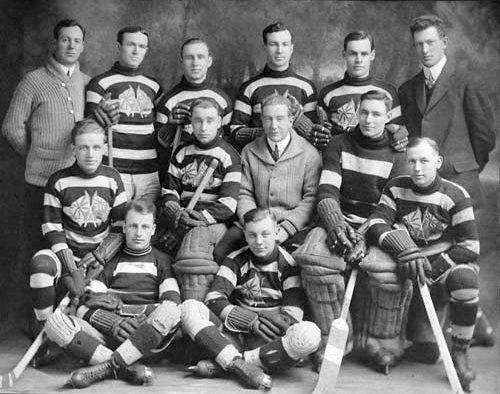
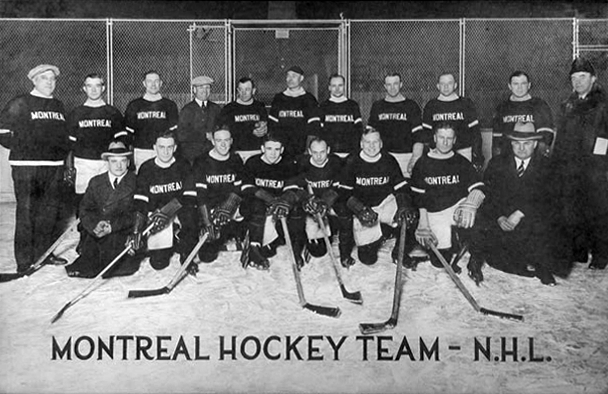
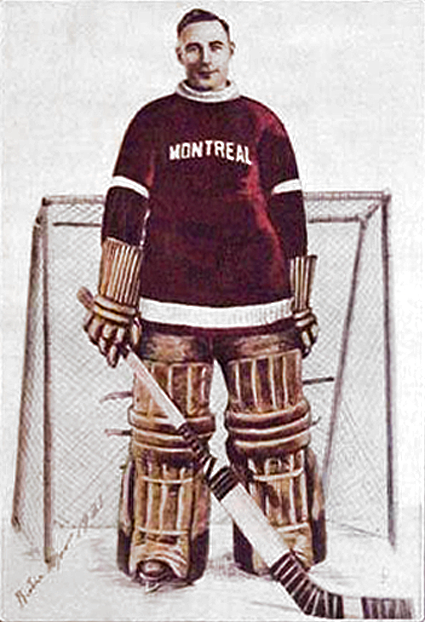
While Benedict reached 20 NHL shutouts in 1925, he actually had 23 career shutouts at that point, as the NHL had only been formed in 1917, and his professional career dated back to the 1912-13 season when he joined the Ottawa Senators of the National Hockey Association.
He would back up future Hall of Famer Percy LeSueur for two seasons until taking over as the starter in 1914, leading the NHA in Goals Against Average for three consecutive seasons and recording four shutouts in five seasons.

The 1914-15 Ottawa Senators. Benedict is in the middle row on the right.
Following the 1916-17 season, the NHA would disband and the Senators would join the newly formed National Hockey League. As part of the NHL, the Senators would win the Stanley Cup in 1920, 1921 and 1923 with Benedict as their goaltender. He would also lead the NHL in wins for six of his seven seasons with the Senators after joining the new league.
The relationship between Benedict and the Senators would sour over the matter of Benedict's drinking, which included the Senators withholding some of his salary as a result. When Benedict sued the club, they countersued and Benedict's problems were revealed and the relationship damaged beyond repair.
As a result, Benedict was traded to the Montreal Maroons in time for their inaugural season in 1924-25 with his NHL career shutout total standing at 18. After a previous shutout, Benedict would get his 20th NHL shutout on January 20, 1925, the first goaltender in the NHL to reach that milestone.

1924-25 Montreal Maroons
The following season of 1925-26 saw Benedict add six more shutouts to his total and lead the Maroons to their first Stanley Cup championship while recording three shutouts in four games against the Victoria Cougars.
The Stanley Cup Champion 1925-26 Montreal Maroons
The next season Benedict would record 13 shutouts in 43 games and two seasons later add 11 more to his tally as scoring in the NHL reached a low point, as Toronto's Ace Bailey led the league with 22 goals and 32 points.
Forward passing was now allowed in the attacking zone for the 1929-30 NHL season and Cooney Weiland led the league with 43 goals and 73 points and shutouts were obviously negatively affected, Benedict in particular, as his total went from 11 to zero in his final NHL season.
Benedict earned his place in hockey lore on this date in 1930 when, following being hit in the face by a shot from the Montreal Canadiens Howie Morenz on January 5th, which broke his nose and fractured his cheek, he returned to the ice six weeks later on this date in 1930 against the New York Americans, now wearing a protective facemask based on one used by boxing sparring partners. His use of the mask was short-lived. Varying accounts claim he wore it for one, two or even as many as five games, modifying the mask and even trying different styles, before giving up on the idea of wearing a mask due to them restricting his vision.
"The nosepiece protruded too far and obscured my vision on low shots," Benedict said. After losing 2-0 to Chicago on February 25th wearing it, "I threw the darn thing away. I blamed it for the loss and that was that." He then tried a wire cage-style protector, like a baseball catcher's mask, "but the wires distracted me. That's when I gave up."
He was again injured on March 4th in a game against Ottawa when he got hit in the face during a goalmouth scramble, which proved to be his final NHL game as well as his reported final (of five) games wearing a mask.
If the reports of five games is accurate, Benedict would have tied the Americans in the first game, defeated the Pittsburgh Pirates 5-4 in the second, lost to Chicago 2-0 in the final game for the leather mask, again defeated the Maroons 5-1 on March 1st before leaving the game on March 4th, a 6-2 defeat by the Senators for a record of 2-2-1 in the five games while wearing a mask of some style.
He played one final season for the Windsor Bulldogs of the IHL before retiring as a player.
Benedict finished his NHL career with 190 wins and 28 ties, along with 57 shutouts in 362 games, holds numerous Maroons goaltending records, including most wins, shutouts and lowest goals against average, and won four Stanley Cups. He was inducted into the Hockey Hall of Fame in 1965.
Today's featured jersey is a 1924-25 Montreal Maroons Clint Benedict jersey from the Maroons first season, and the one in which Benedict would become the first to reach the 20 shutout mark in NHL history.
The Maroons sweaters in their inaugural season read "MONTREAL" across the front, rather than the more familiar "M" logo that they would adopt for their second season and continue to wear for the remainder of the franchise's remaining 13 seasons.

Our video selection today is a trip through time and a look at the Evolution of the Goalie Mask. Hopefully you will see some forgotten favorites from the days of the early paint jobs on the full face mask.
Labels:
Benedict Clint,
Montreal Maroons
Subscribe to:
Comments (Atom)


